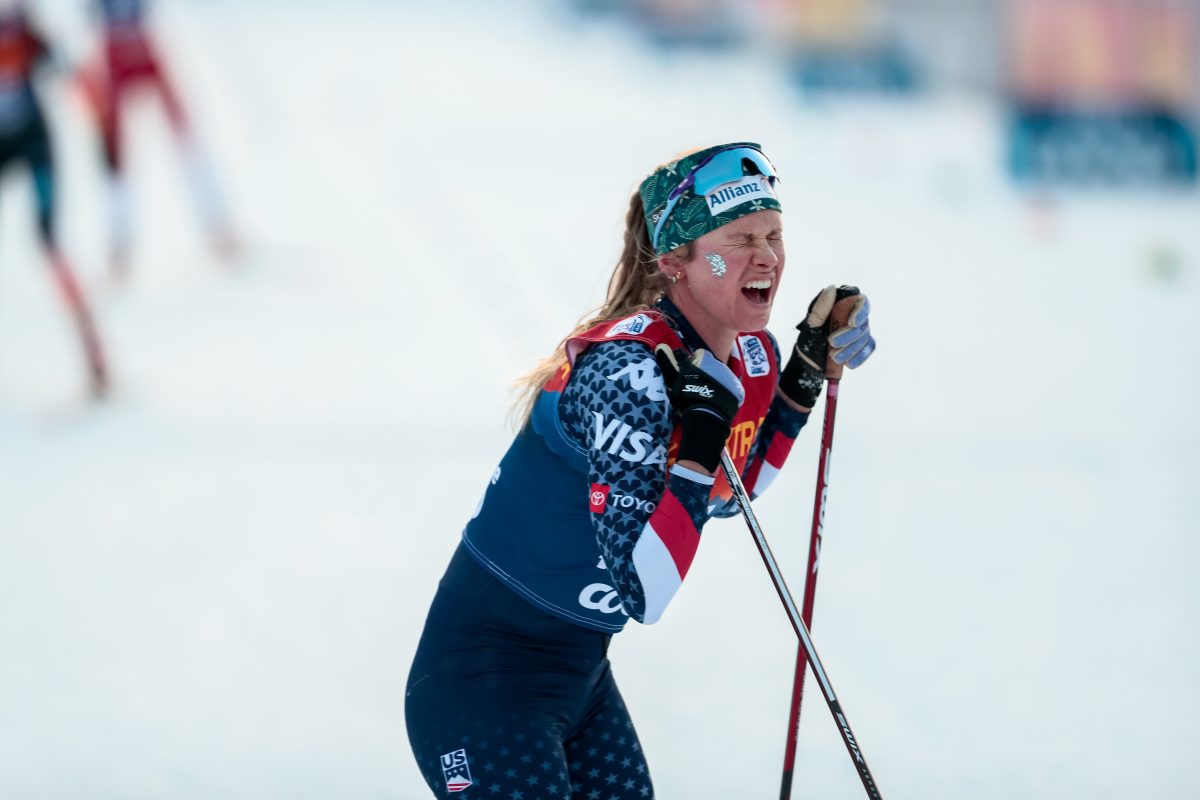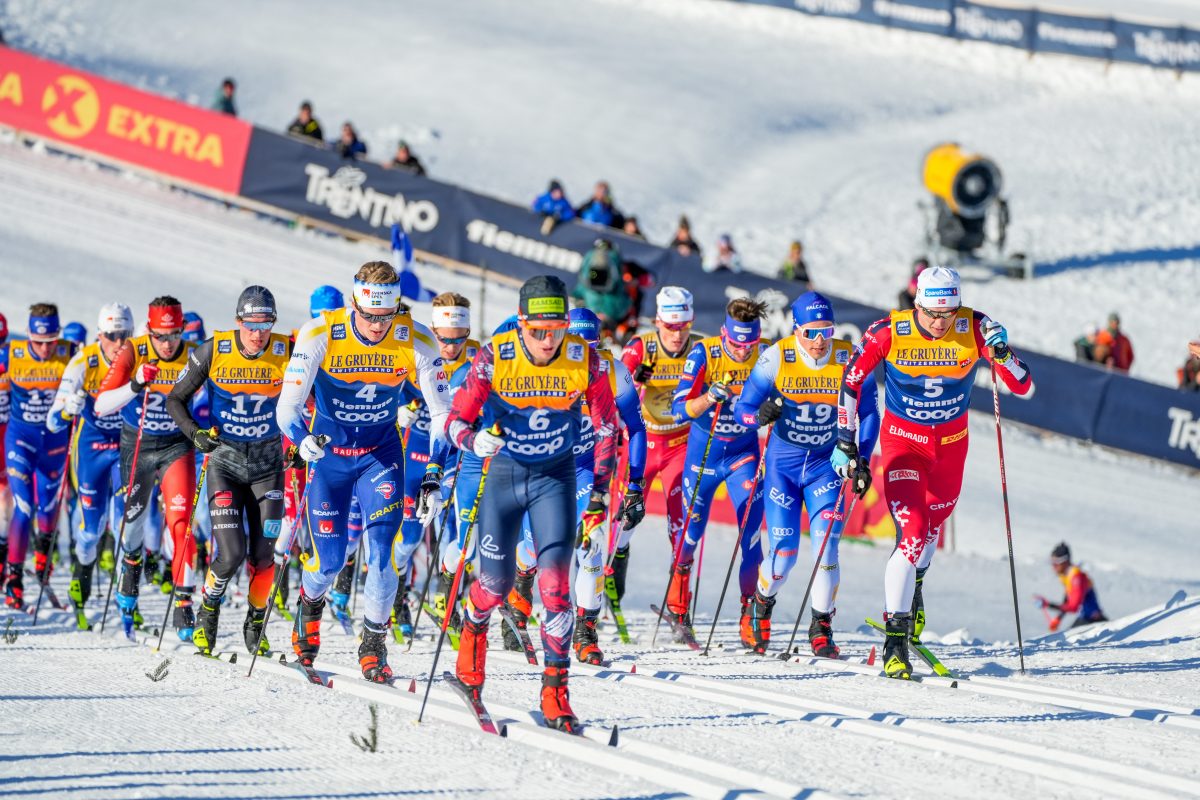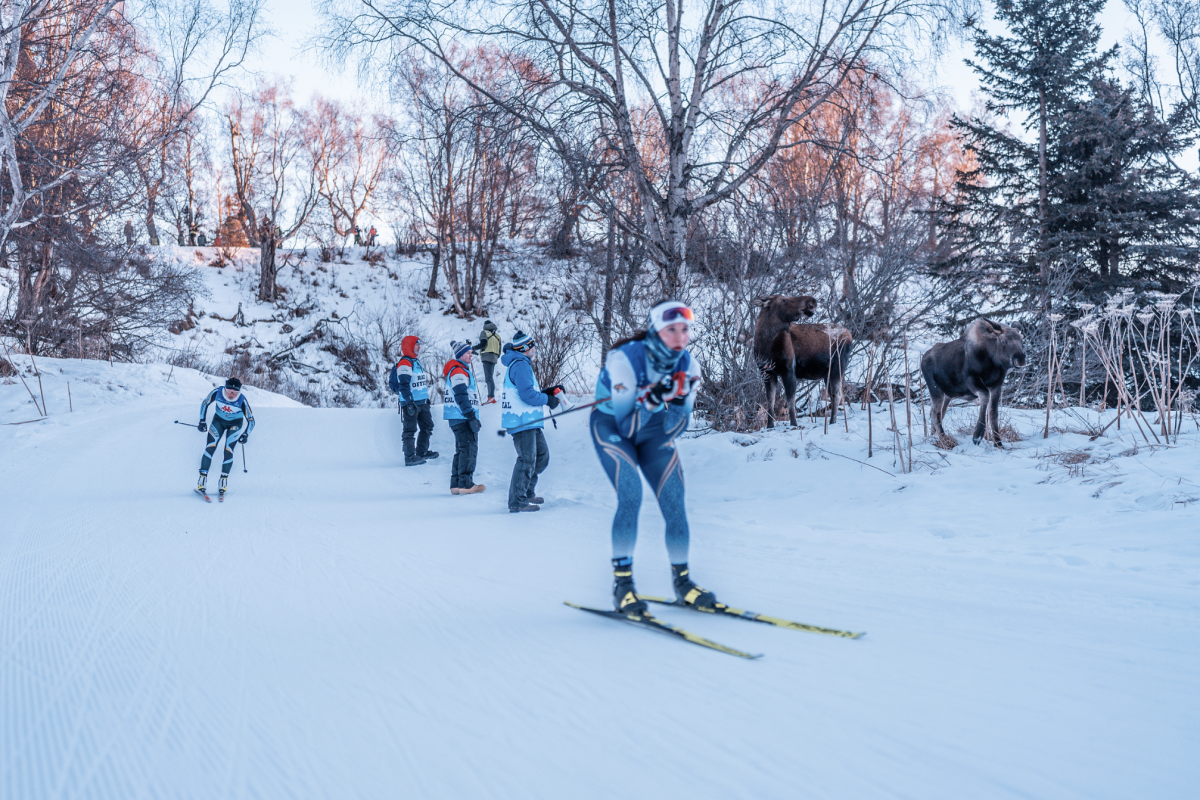
After two more sets of trials races in Jericho, Vt., last weekend, the US Biathlon Association (USBA) has come one step closer to finalizing its World Cup roster for the first period of racing.
Susan Dunklee, Tim Burke and Lowell Bailey were the winners in the Jericho races (results here: Oct. 15/Oct. 16), but they were all already prequalified for the World Cup. So were Clare Egan, Sean Doherty and Leif Nordgren. The last two did not compete in Jericho.
USBA completed its women’s squad with the addition of Joanne Reid, who landed at the top of the rankings list of non-prequalified athletes for a combined series of two trials races in August and the two in October.
While Dunklee swept all four of the women’s races, Reid – a member of USBA’s “X” development team – notched a second-place finish and three third-place showings, making her one of the most consistent performers in the field.
“I’m not a person who over-analyzes situations or results,” Reid, 24, wrote in an email of coming into the October races in a good position for making the World Cup team. “I take each day at a time, and I react to things as they come, rather than reacting in anticipation of what might come. So I came into these races wanting to go out and do biathlon, and that’s what I did. What the committee and the coaches choose, ultimately, in terms of teams and starting spots and training camps is something I can’t control, and I rarely worry about things I can’t control.”
Reid has been doing biathlon for just over a year, and last season got her first World Cup starts in Germany, Italy and Canada. At the Canmore World Cup, she finished 57th in the sprint, her best result of the season.
“My main goal is to merge together the shooting speed I’ve been slowly developing, with the accuracy I occasionally have,” she wrote. “My coach (Jean Paquet, USBA’s head development coach) and I have been working all summer to bring my shooting speed up from where it was (slowest on World Cup, slowest on IBU Cup, slowest at nationals) to something competitive, which like many new endeavors has not always been successful.”
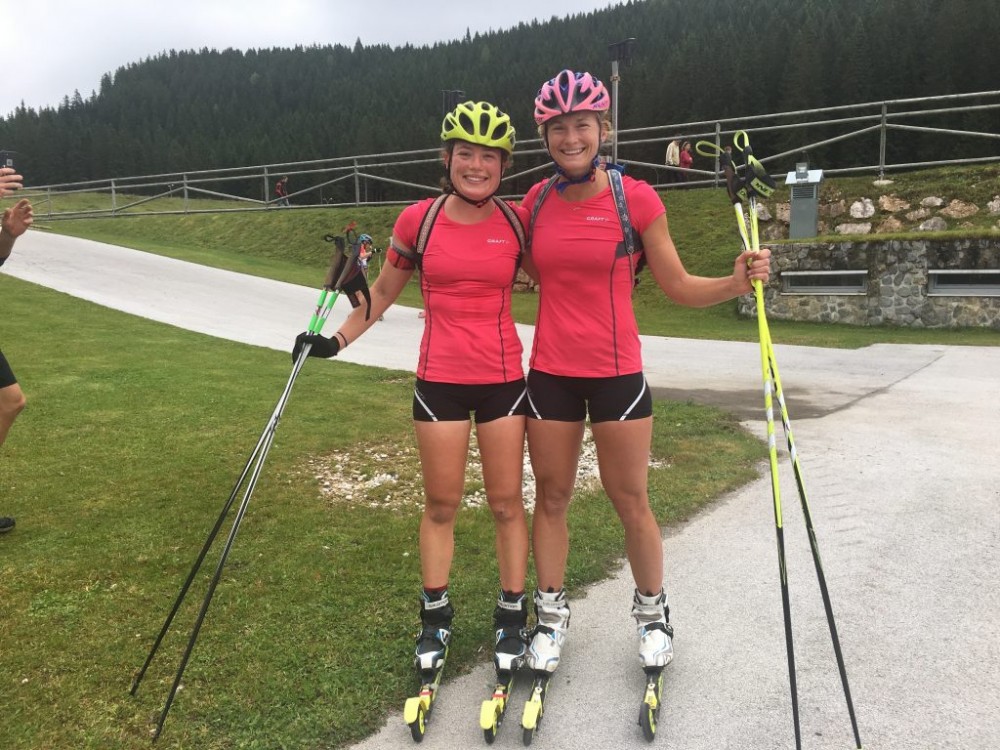
Two other women had impressive showings at trials. Emily Dreissigacker of the Craftsbury Green Racing Project and USBA National Development Group, and Maddie Phaneuf of the USBA A-team, each placed second.
But USBA’s International Competition Committee ultimately opted not to fill all four of the women’s quota spots it has for World Cups 1, 2 and 3. The three women were selected for the early season World Cups and on-snow camp in Canmore, Alberta, Oct. 24 to Nov. 12. Six men were selected to the same Canmore camp, and five of them will start the season on the World Cup.
“It was good to see some athletes with good improvements compared to August, especially Maddie and Emily on the women’s side,” USBA Chief of Sport Bernd Eisenbichler wrote in an email.
“As we showed with Sean Doherty’s example 2 years ago, the coaches and I do have a good handle with that and find the right time to send an athlete to the race level that fits at the right time,” Eisenbichler continued. “It’s a long season and Maddie needs more training now to have a great season from January through March. Emily is still very new in the sport and needs more work before going to the World Cup. We would like to have a full women’s team on the start line, but more than ever we need to look at the individual athlete and what’s best for them and their development. The level on the World Cup is very high and athletes sent there need to be ready.”

Dreissigacker was invited to join an “X” team training camp in Lake Placid, N.Y., and after that she will travel to Canmore, Alberta, for an on-snow training camp with her Craftsbury team. Eisenbichler expects her to compete at IBU Cup Trials Dec. 15-20 at Mt. Itasca in Coleraine, Minn., and hopes to see her competing on the second-tier circuit in Europe later this season.
Phaneuf will travel to Canmore for the USBA’s Thanksgiving camp then return to Lake Placid to prepare for IBU Cup Trials with her coach, Paquet.
“As [Maddie] had a pretty long illness in the spring, she still needs to catch up on things – especially on the physical side – in the weeks to come,” Eisenbichler said. “As she is first-year senior we need to make sure to develop her in a good way and bring her to the right races and the right time.”
Initially, it was a tough pill for Phaneuf to swallow.
“I definitely had my hopes up to make the [pre-World Cup] Canmore snow camp,” Phaneuf said on the phone Wednesday. “But then when I finished the second race [this weekend], Bernd came up to me and was like, ‘Oh Maddie, great job this weekend. You are improving so much. We’re so happy to see that. I just want to talk to you personally before I leave…’ ”
Phaneuf is hoping to make senior World Championships this season. She tried to keep that goal in perspective while considering USBA’s plans for her.
“I was obviously not very happy because my goal was to make the World Cup for the early season and at least get the experience to go to the on-snow camp early, but I definitely understand where they’re coming from,” she said. “I know in the past with US Biathlon, they’ve had a few athletes that they start off young and then they end up burning them out or they just don’t do nearly as well as they’d hoped… They’re definitely being a lot more proactive about how they see development in their junior athletes and senior athletes, which I think is really smart…. But it is also disappointing when your goal is to make a team. I’m still excited to see what happens with the IBU Cup and now I’m just more excited to beat my personal bests and try to podium and prove myself that I am ready for the World Cup and see how the season goes.”
Reid knew that she could have been in a similar situation.
“My development has been so sudden (and at times rocky), that it may have made more sense to leave me behind to train more,” she wrote. “I’m really flattered and very honored that USBA thinks I’m ready to step back up to the World Cup.”
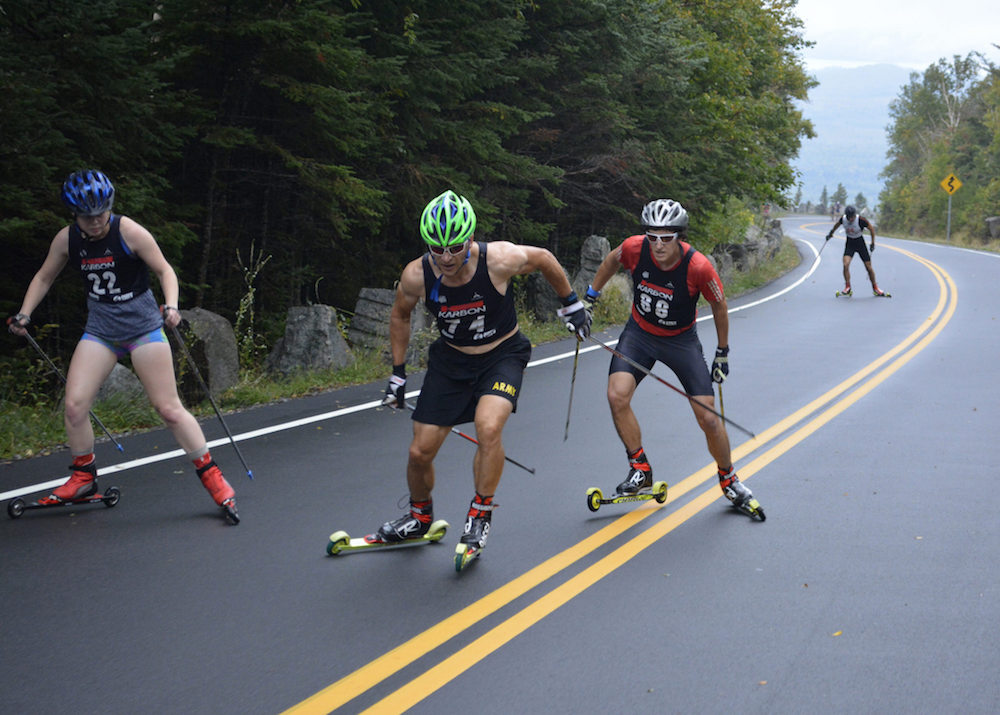
On the men’s side, the World Cup team is not quite finalized. Both Russell Currier of the Outdoor Sports Institute (formerly the Maine Winter Sports Center), who won the trials series rankings among non-prequalified athletes, and Paul Schommer of the USBA National Development Group will travel to the camp in Canmore. Ultimately, only one of the two will go to the World Cup.
“I wasn’t very relaxed going into either of the trials,” Currier wrote in an email. “The past few years haven’t been what I’ve wanted result wise, so I was really under a lot of pressure to prove otherwise. Expectations were high though. I’ve had some help with my prone set up and it’s been having positive feedback in training.”
A former national team member, 2014 Olympian and World Cup regular, Currier has two World Cup top 10’s to his name (in 2011/2012) and is itching to get back to the sport’s biggest stage.
“Racing on the World Cup is the goal for now,” he wrote. “I really miss the atmosphere of racing in Europe.”
He hopes that the Canmore camp will prepare him well.

“Training with the other guys during the specific sessions will be very helpful,” he explained. “The more time I can spend shooting under pressure the better… The chance to be 80% or better in a race is closer than it has been in past years. I didn’t shoot anywhere close to that last weekend and was hoping I would have, but the new approach is still going in the right direction.”
Schommer has spent most of the summer training on his own in Hayward, Wis., but recently moved to Lake Placid. The 24-year-old College of St. Scholastica graduate is still in his first few years of biathlon, but has been working with Paquet and earned start rights on the IBU Cup last season.
“One of my goals I set for myself at the beginning of the training year was to have a World Cup start,” he wrote in an email. “However, I don’t want to get ahead of myself. Right now I am just making the most of each training session and looking forward to some quality training on snow in Canmore.”

Schommer clinched his spot with a third-place finish in Sunday’s sprint, behind Burke and Currier. Despite fewer years of biathlon experience than either of the older athletes, Schommer shot identically to Burke and Currier with three missed targets and finished 43 seconds behind Burke.
“Coming into the weekend I knew I had a shot at making the camp, but just wanted to concentrate on my races,” Schommer explained. “I didn’t really have many expectations coming into the weekend other than doing my best and taking away what I could to become a better biathlete. [On Sunday] I knew if I had a good race I would have a shot, so I just prepared myself to have the best race I could. Sometimes pressure breaks something, other times it improves it. I just tried to do the latter, just race to the best of my ability and not think about results.”
While they were good enough to earn him a spot in Canmore, Schommer wrote that he wasn’t “super psyched” with either of his performances over the weekend.
“It’s a really exciting time for USBA right now with so many great athletes domestically, and being able to train with the National team in Canmore is a huge opportunity,” he wrote.
Chelsea Little
Chelsea Little is FasterSkier's Editor-At-Large. A former racer at Ford Sayre, Dartmouth College and the Craftsbury Green Racing Project, she is a PhD candidate in aquatic ecology in the @Altermatt_lab at Eawag, the Swiss Federal Institute of Aquatic Science and Technology in Zurich, Switzerland. You can follow her on twitter @ChelskiLittle.

